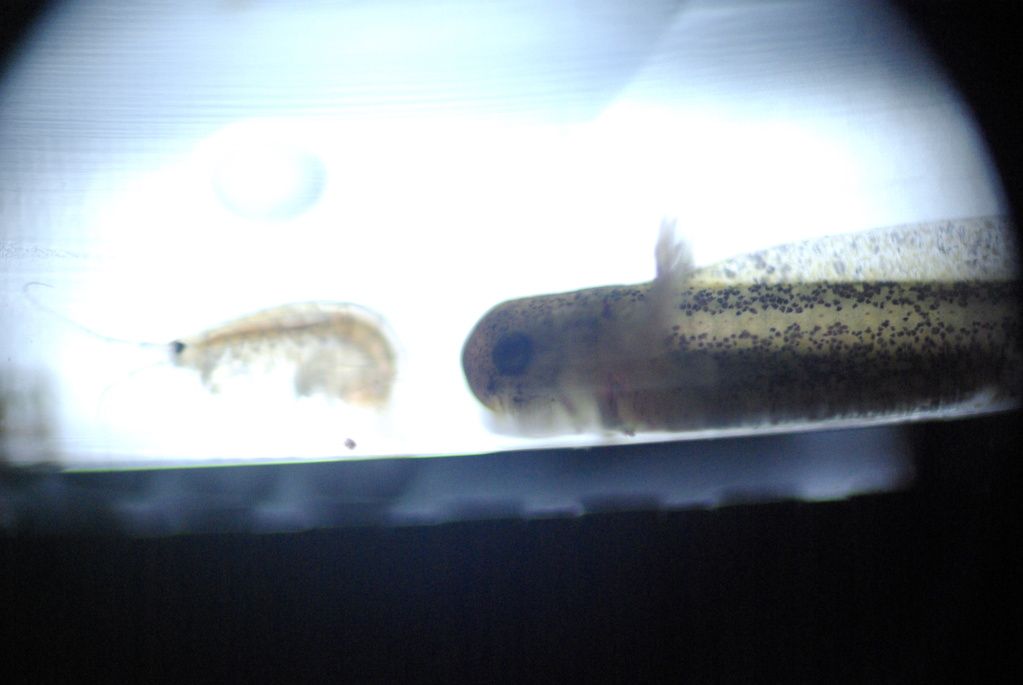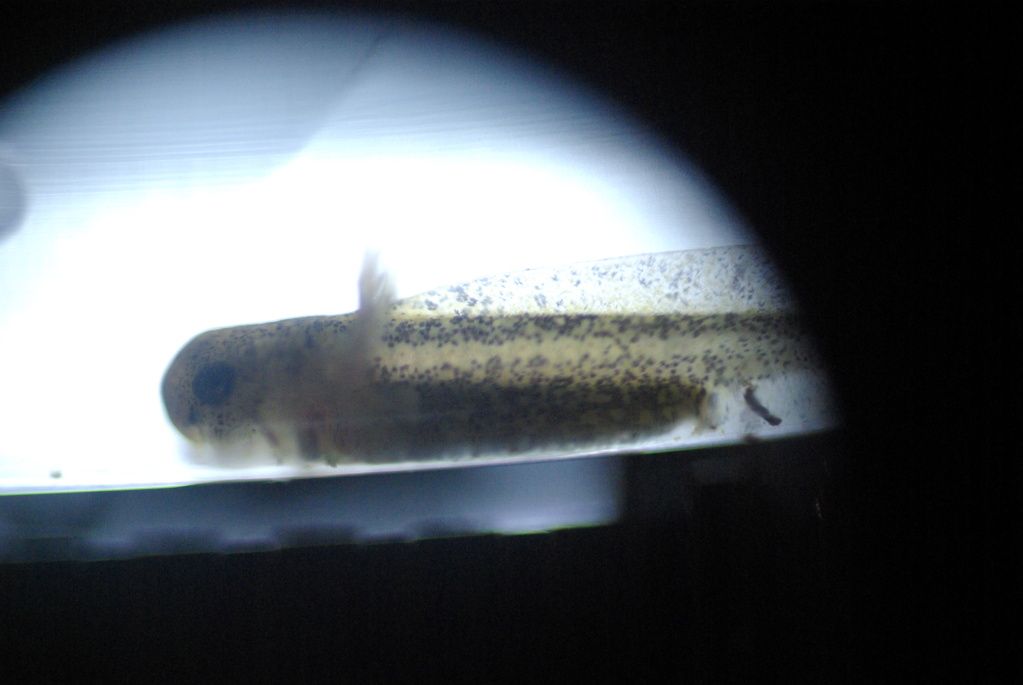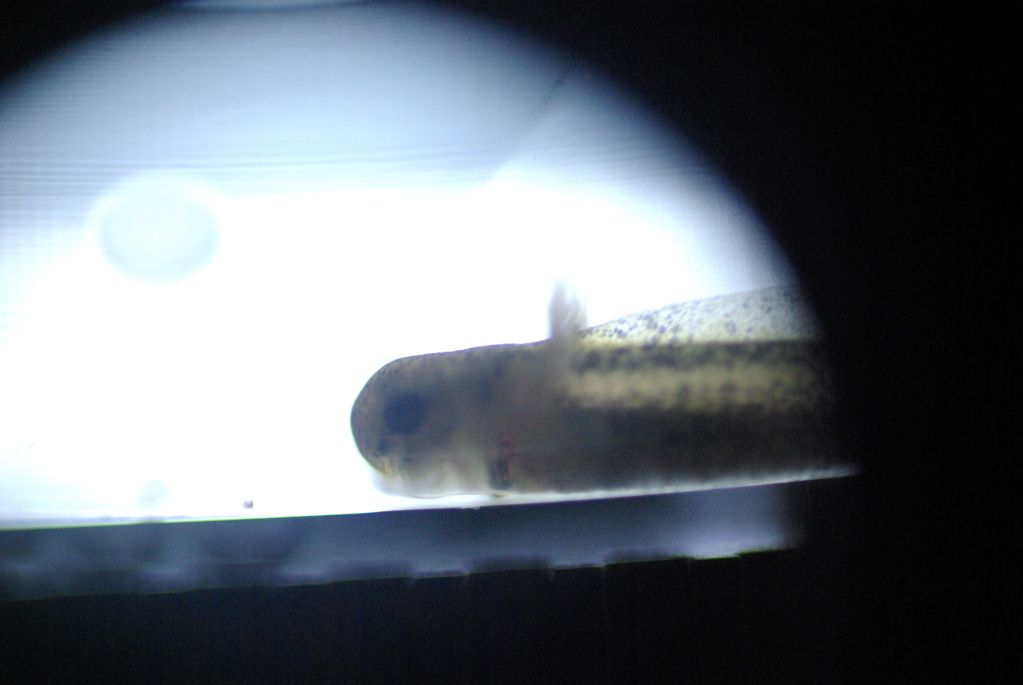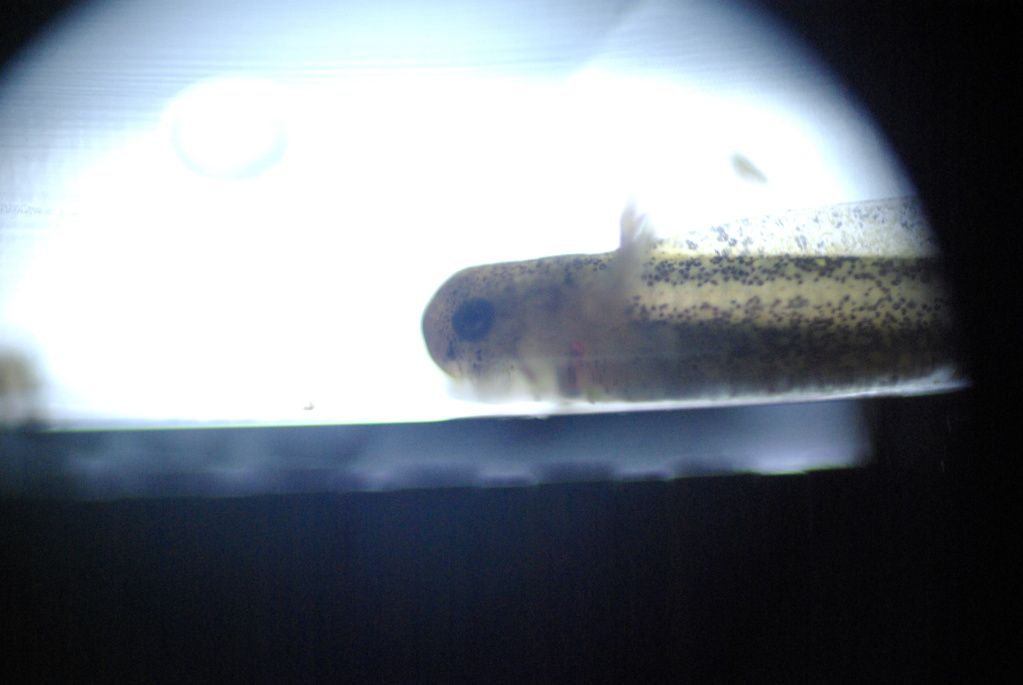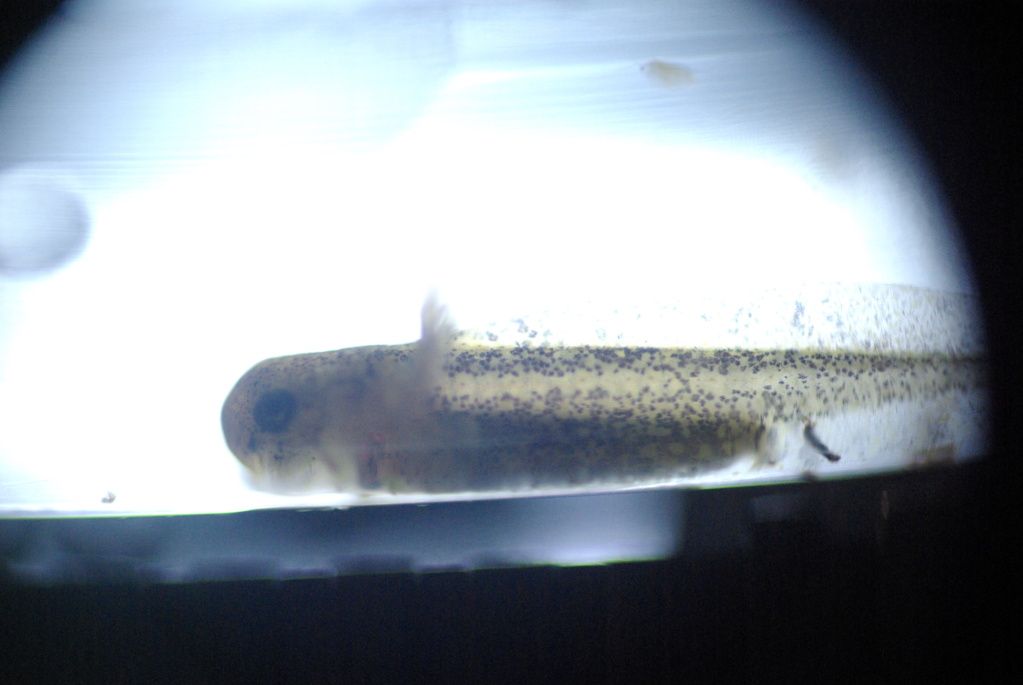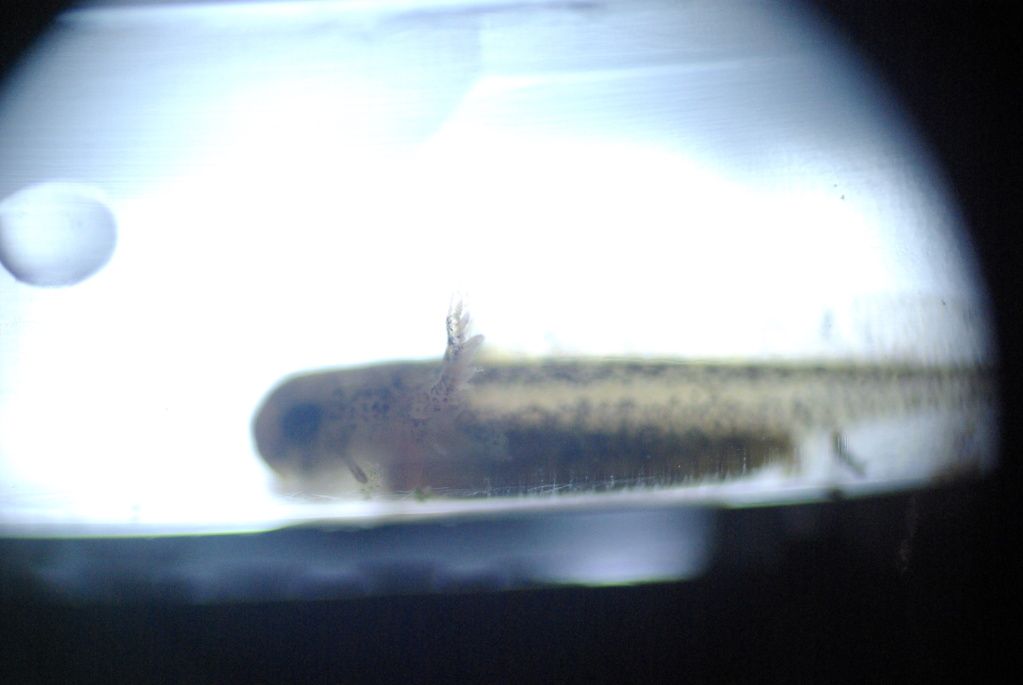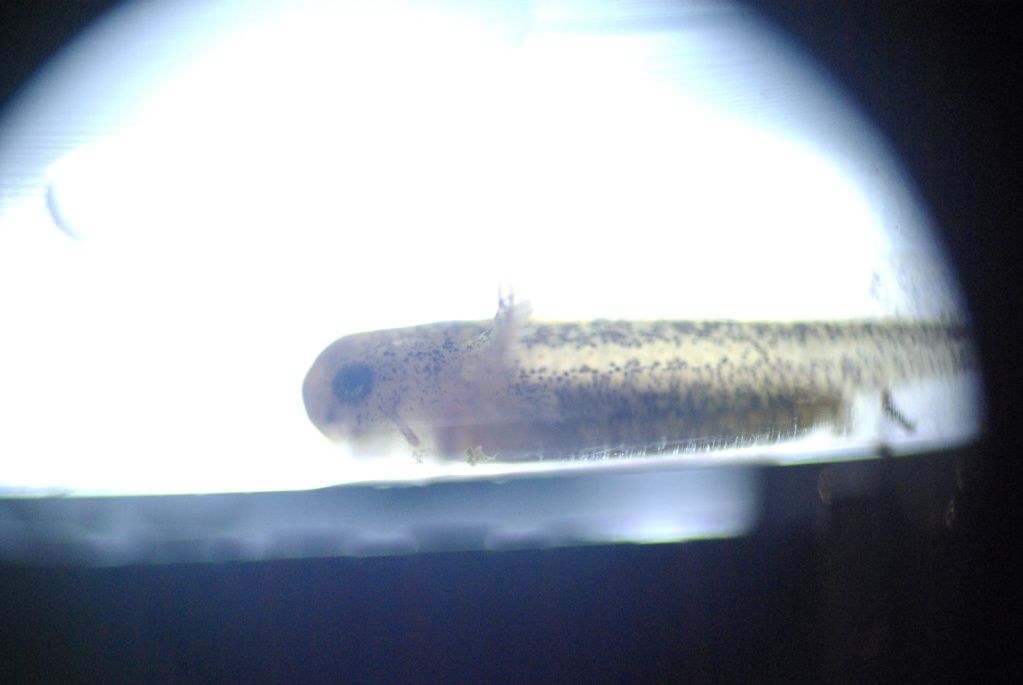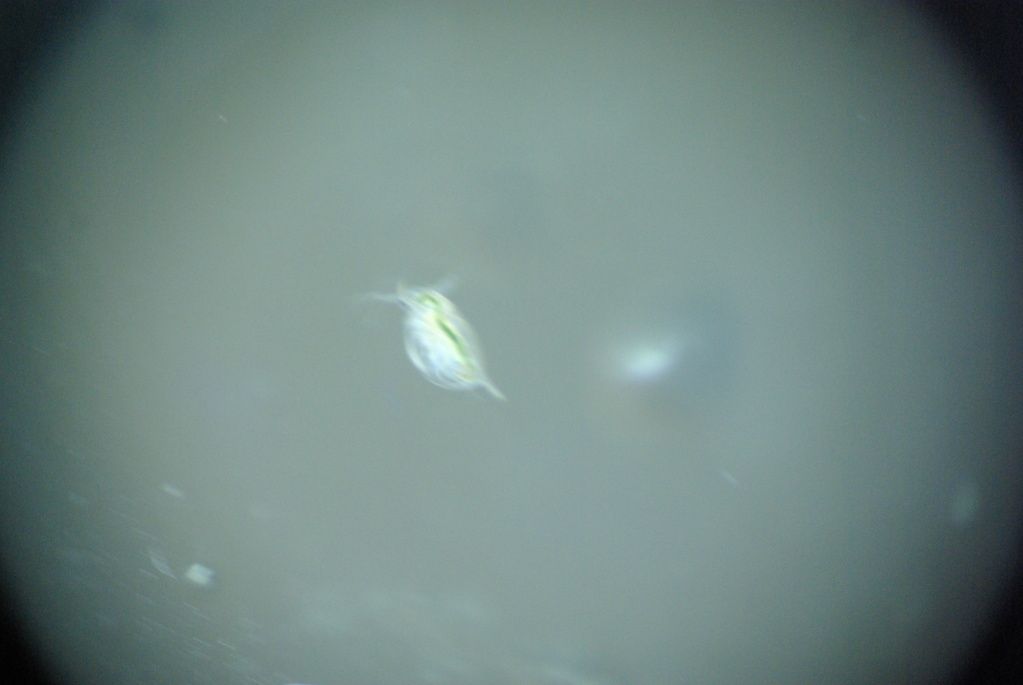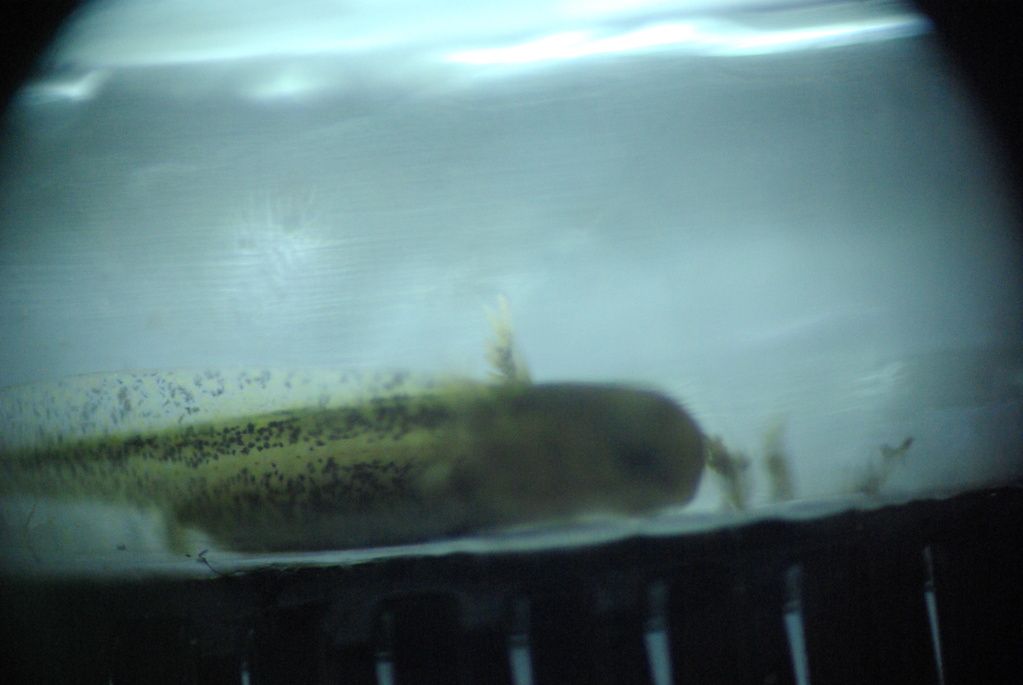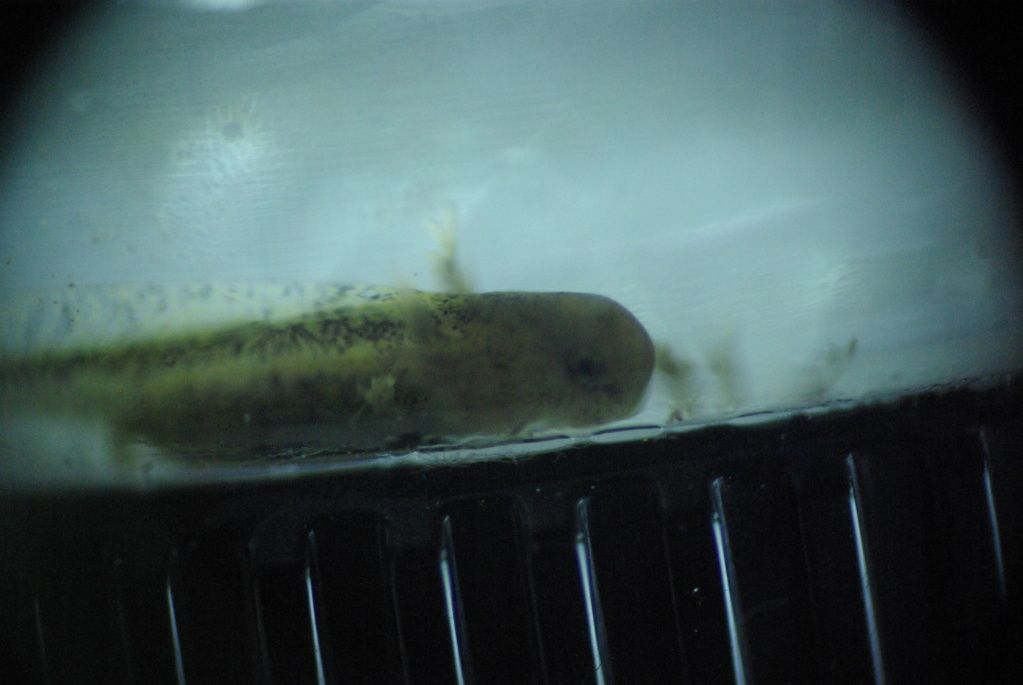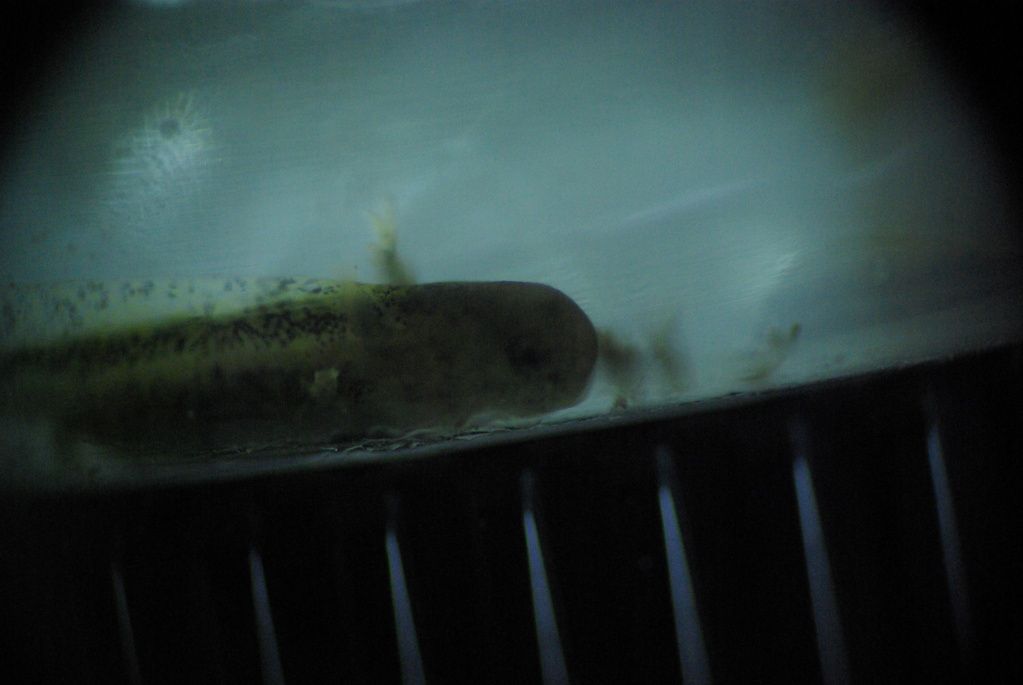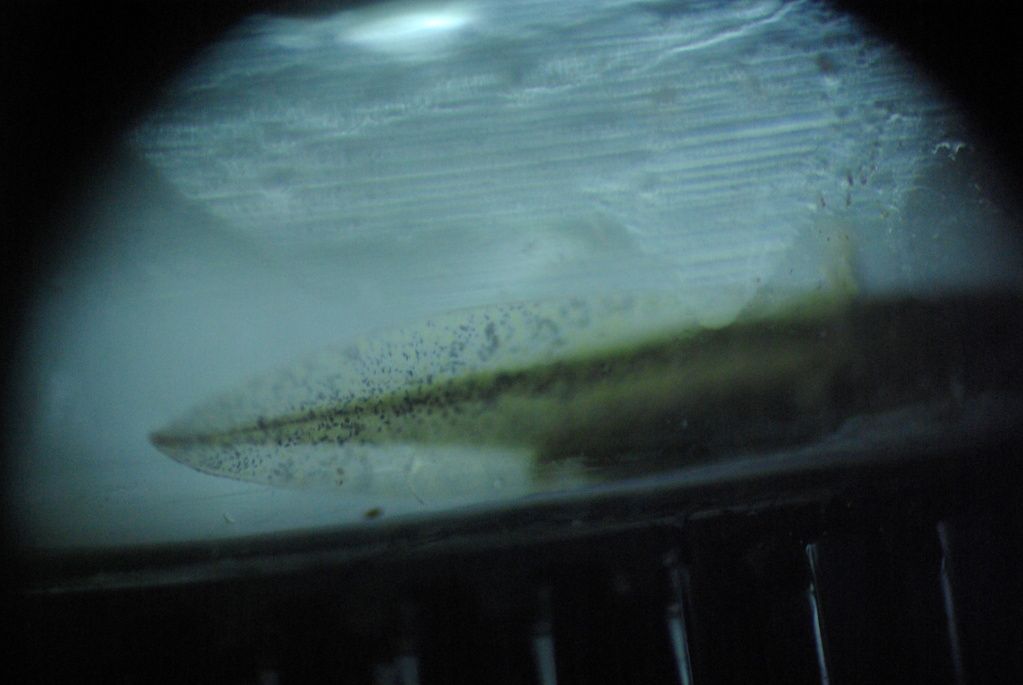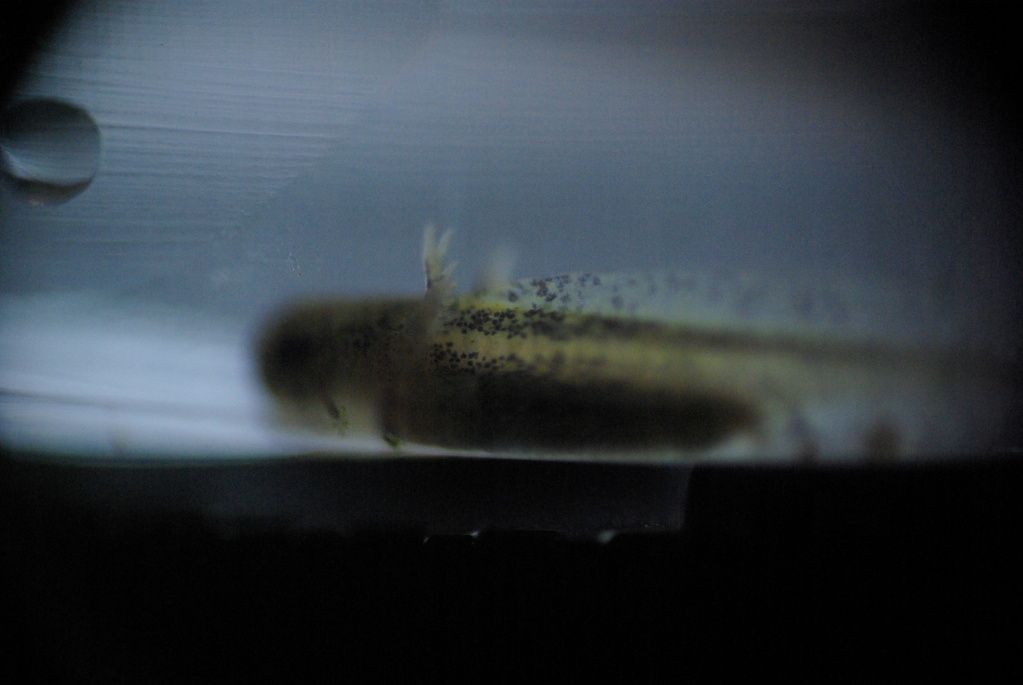knifegill
New member
- Joined
- Mar 24, 2012
- Messages
- 54
- Reaction score
- 1
- Points
- 0
- Country
- United States
I can see tiny gills on these, I'm assuming they are salamander. The green algae inside the eggs is characteristic of salamanders - according to my three hours of poking around the web! I'm such a noob at amphibians! Anyway, there were found above water attached to a stick at the bridge of a natural beaver dam in Wa. Ambystoma species? Will I need to hatch and rear some to be sure?
This egg mass is very firm, harder than jello - and the one that popped out is doing fine so far, he wiggles if I gently disturb him...which I don't do now - but did to make sure he survived the trip. And two of the eggs are rotting. Should I try to extract them?
I've got daphnia, cyclops, ostracods and gammarus in the dish, and am culturing more in the backyard. I also added a tiny bit of crushed coral to buffer the pH and provide hardness - was that necessary? It's what I do for my fish...
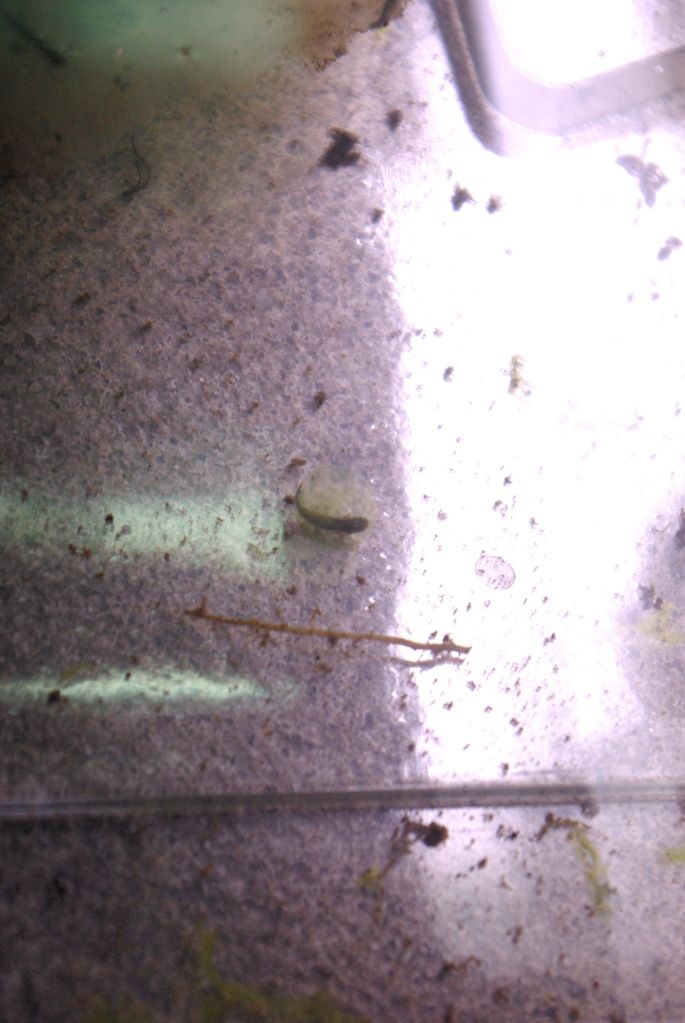
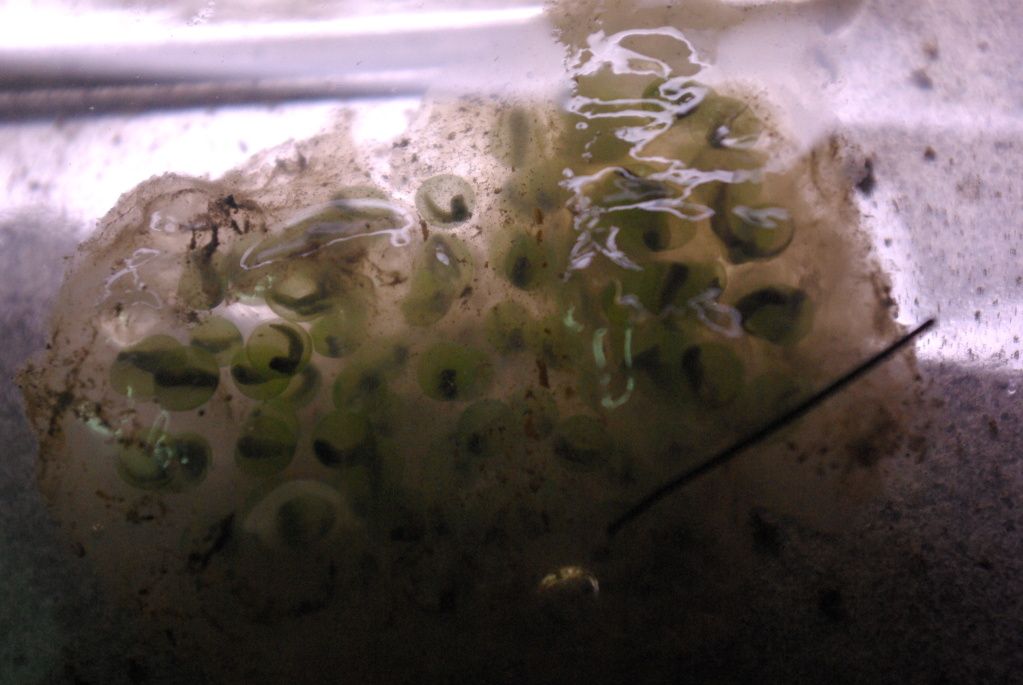
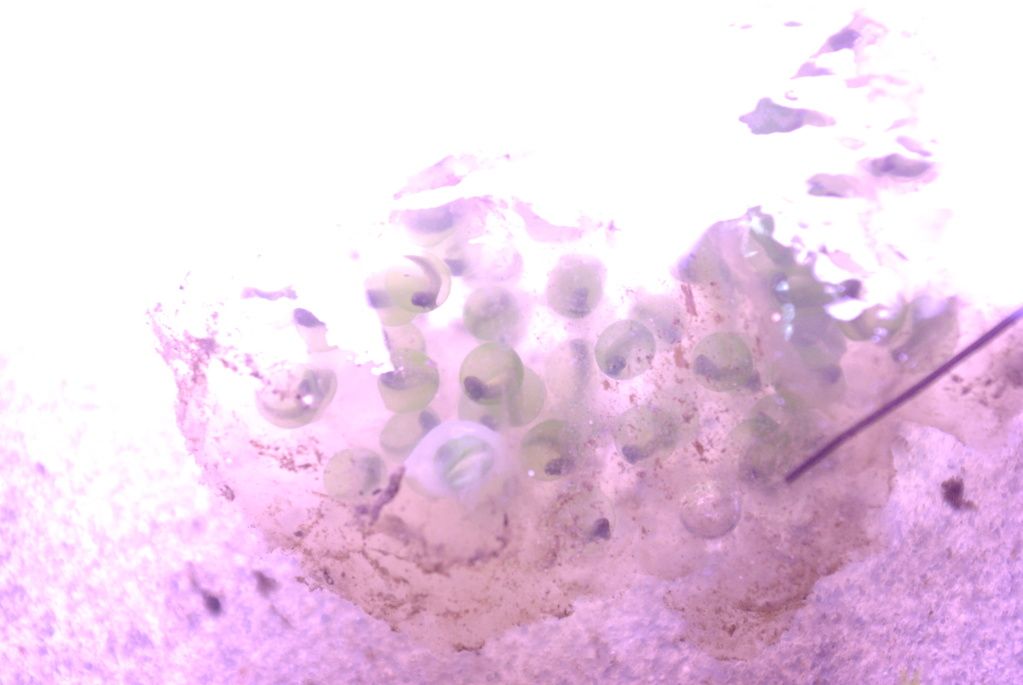
This is my first non-frog egg mass. Any tips are appreciated. Temp is about 55F and there is no agitation of water, just a huge tray with lots of surface area and a floating ramp at the ready. Hoping for some neotenics to keep with my axolotl!
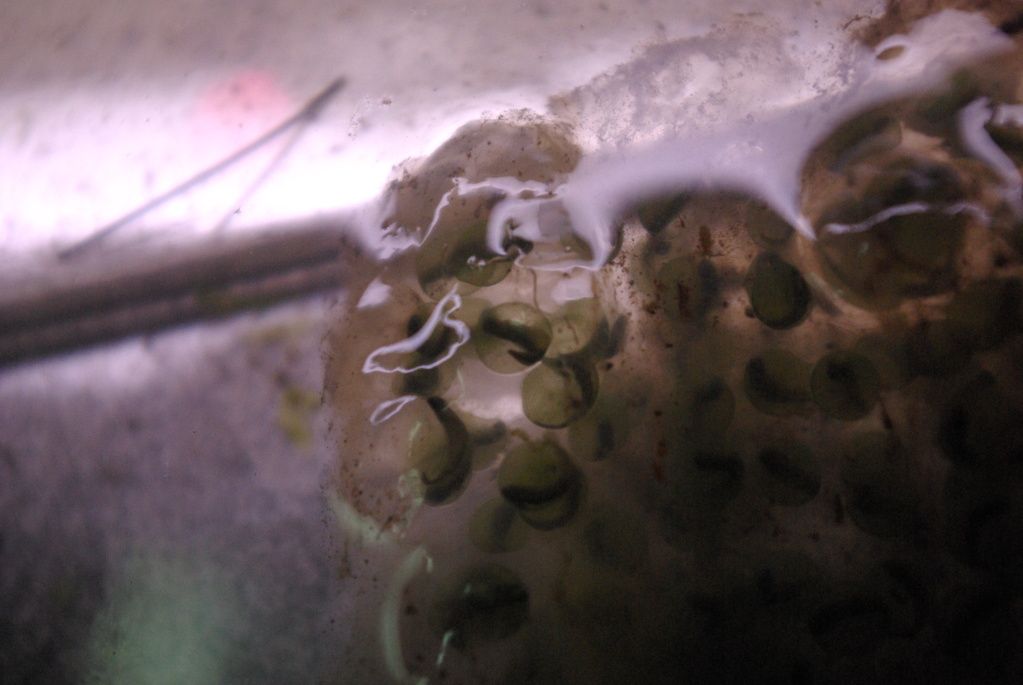
This egg mass is very firm, harder than jello - and the one that popped out is doing fine so far, he wiggles if I gently disturb him...which I don't do now - but did to make sure he survived the trip. And two of the eggs are rotting. Should I try to extract them?
I've got daphnia, cyclops, ostracods and gammarus in the dish, and am culturing more in the backyard. I also added a tiny bit of crushed coral to buffer the pH and provide hardness - was that necessary? It's what I do for my fish...



This is my first non-frog egg mass. Any tips are appreciated. Temp is about 55F and there is no agitation of water, just a huge tray with lots of surface area and a floating ramp at the ready. Hoping for some neotenics to keep with my axolotl!

Last edited by a moderator:

